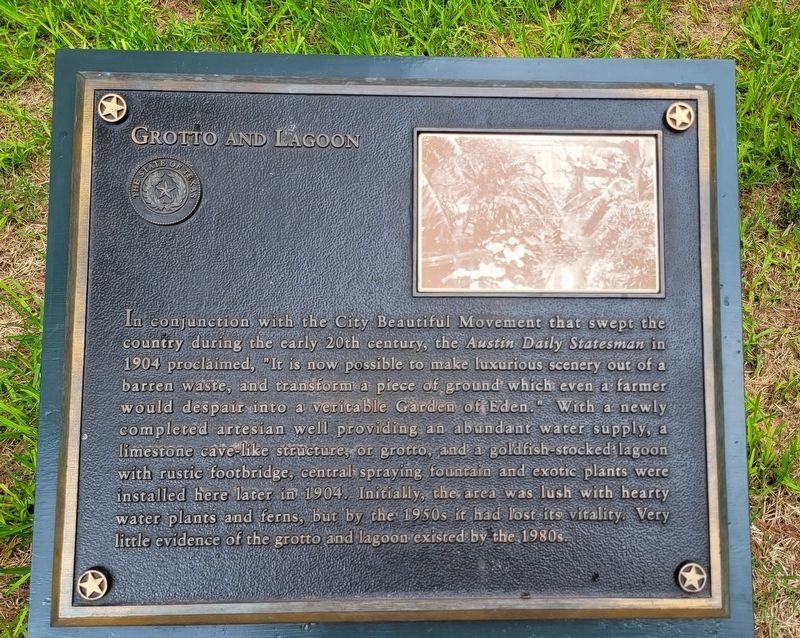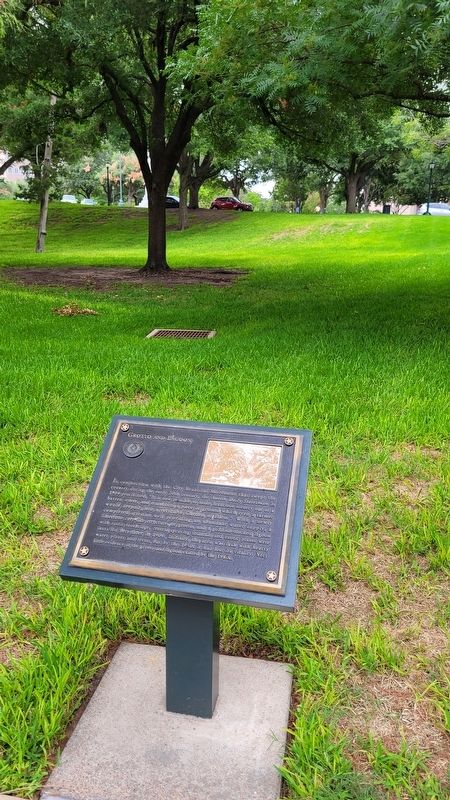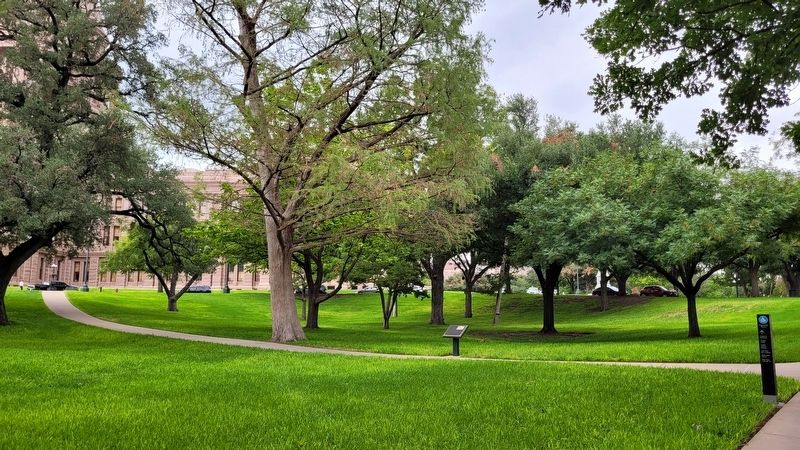Downtown Austin in Travis County, Texas — The American South (West South Central)
Grotto and Lagoon
Erected by State of Texas.
Topics. This historical marker is listed in this topic list: Notable Places. A significant historical year for this entry is 1904.
Location. 30° 16.409′ N, 97° 44.393′ W. Marker is in Austin, Texas, in Travis County. It is in Downtown Austin. Marker can be reached from the intersection of Congress Avenue and East 11th Street. The marker is located in the southeast section of the Texas State Capitol grounds. Touch for map. Marker is at or near this postal address: 1100 Congress Avenue, Austin TX 78701, United States of America. Touch for directions.
Other nearby markers. At least 8 other markers are within walking distance of this marker. Bicentennial Fountain (within shouting distance of this marker); Artesian Well and East Drinking Fountain (within shouting distance of this marker); Spanish Tejanos (within shouting distance of this marker); Tejanos Under the Mexican Flag (within shouting distance of this marker); Tejanos in the Republic of Texas (within shouting distance of this marker); Tejanos and Texas in the U.S. (within shouting distance of this marker); Mexican Americans in 20th Century America (within shouting distance of this marker); Heroes of the Alamo (within shouting distance of this marker). Touch for a list and map of all markers in Austin.
Also see . . . City Beautiful movement. Wikipedia
The City Beautiful Movement was a reform philosophy of North American architecture and urban planning that flourished during the 1890s and 1900s with the intent of introducing beautification and monumental grandeur in cities. It was a part of the progressive social reform movement in North America under the leadership of the upper-middle class concerned with poor living conditions in all major cities. The movement, which was originally associated mainly with Chicago, Cleveland, Detroit, Kansas City and Washington, D.C., promoted beauty not only for its own sake, but also to create moral and civic virtue among urban populations. Advocates of the philosophy believed that such beautification could promote a harmonious social order that would increase the quality of life, while critics would complain that the movement was overly concerned with aesthetics at the expense of social reform; Jane Jacobs referred to the movement as an "architectural design cult."[(Submitted on September 13, 2022, by James Hulse of Medina, Texas.)
Credits. This page was last revised on February 1, 2023. It was originally submitted on September 12, 2022, by James Hulse of Medina, Texas. This page has been viewed 134 times since then and 33 times this year. Photos: 1, 2, 3. submitted on September 13, 2022, by James Hulse of Medina, Texas.


